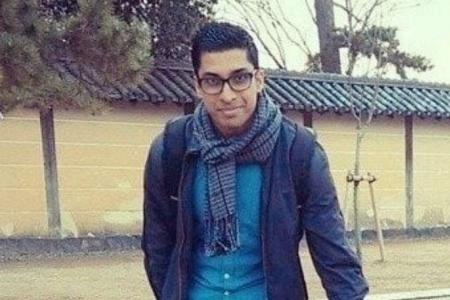Singaporean climber missing after reaching summit of Mount Everest on Friday
Singaporean climber Shrinivas Sainis Dattatraya last sent a text message to his wife on Friday saying he had reached the summit of Everest, but he was not likely to make it back down.
Mr Shrinivas, 39, who is a senior manager for software engineering at real estate tech firm JLL Technologies, left for Mount Everest on April 1. He was due to return home on June 4.
Speaking to The Straits Times, his wife Sushma Soma said she last heard from him at 3.30pm on Friday. There has been no word from him since.
Madam Soma, a 36-year-old musician, said: “Through his satellite phone, he told me that he had made it to the summit. But then he followed with bad news, saying he would not be able to make it down.”
She added that he told her he had come down with high-altitude cerebral edema (Hace), a severe type of high-altitude illness that could prove fatal.
She learnt at 2am on Saturday that the two Sherpas he was with, as well as another person in the group, made it down from the mountain, but her husband never did.
In response to queries, a spokesman for the Ministry of Foreign Affairs (MFA) said the Singapore High Commission in New Delhi has been in close contact with the family of Mr Shrinivas, local authorities in Nepal and emergency medical services since Friday evening.
She said: “Search and rescue operations are ongoing. MFA will continue to monitor developments and render the necessary consular support to the family during this difficult time.”
The Straits Times has contacted Seven Summit Treks – a Nepal-based adventure travel operator – for more information. Mr Shrinivas’ Everest ascent was organised by Seven Summit Treks and another operator, Nepal Guide Treks.
Singaporean climber Kumaran Rasappan, who scaled Mount Everest in 2012, said there are two main fatal illnesses that can occur at such high altitudes – Hace and high-altitude pulmonary edema, or Hape.
Dr Kumaran, 39, who is a consultant at the department of orthopaedic surgery at the National University Hospital, said the brain fills up with fluid when struck by Hace.
He added that the illness can lead to a loss of coordination and climbers can become unable to understand their surroundings. In some cases, they can experience hallucinations.
When hit with Hape, fluid fills up the climber’s lungs, he said. It can lead to coughing, and climbers may experience breathlessness and difficulty walking.
Dr Kumaran, who holds an international diploma in mountain medicine, said: “The main thing that should be done when either of these two illnesses occurs is to get the person down the mountain as soon as possible.”
He added that steroids and supplemental oxygen can act as temporary measures while the climber gets to lower altitude.
Mr Shrinivas’ family members have started a petition on Change.org to help bolster support for ongoing search efforts.
The petition said a team of Sherpas embarked on a search operation on Saturday morning, but added that there is more to do and a need to act faster.
The petition has obtained 7,200 signatures so far.
Madam Soma said: “We are racing against time to find him, and we are urgently looking for anyone who has rescue mission contacts in Nepal to help.”
Get The New Paper on your phone with the free TNP app. Download from the Apple App Store or Google Play Store now


